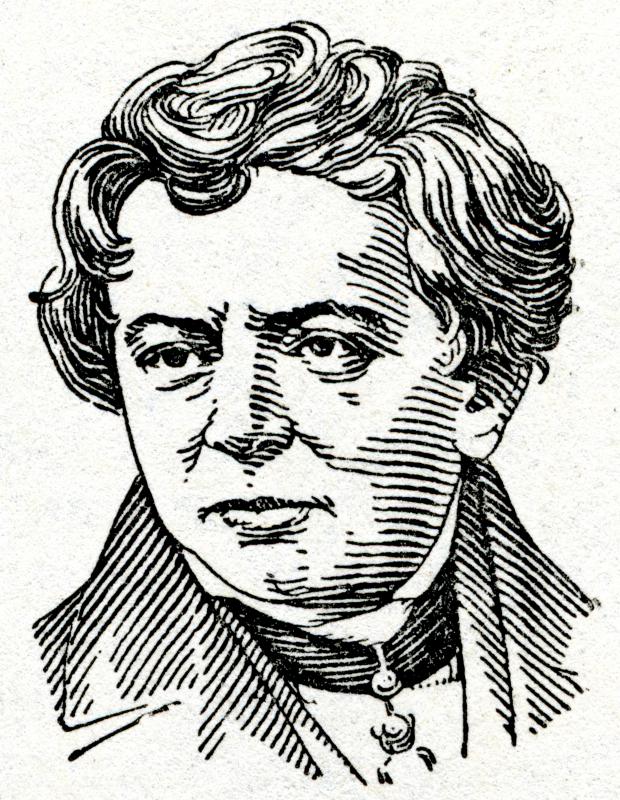At EasyTechJunkie, we're committed to delivering accurate, trustworthy information. Our expert-authored content is rigorously fact-checked and sourced from credible authorities. Discover how we uphold the highest standards in providing you with reliable knowledge.
What are Resistors?
Resistors are electrical devices which manage the flow of current through a circuit, creating a drop in voltage between two points. They are a necessary part of most modern electronics. They rely on something called Ohm's Law, which maintains that the voltage shift or potential difference between two ends of a conductor is held in proportion to the current moving through the conductor. As a formula, Ohm's Law is usually written V=IR, with V representing the voltage, I the current in amperes, and R the resistor value in ohms.
It is important to recognize that Ohm's Law is meant to deal with what could be dubbed ideal resistors, such as cannot exist in the real world. Ohm's Law therefore approximates what happens in reality, but in nearly all cases the approximation is close enough to the true value to be treated as though it were exact. The reason that resistors in the real world cannot function in perfect accordance with Ohm's Law is that in any given situation, a range of variables, including outside heat, external distortion, and ambient noise, all minutely affect the flow of current through a resistor.

There are five main types of resistors, each drawn differently on a schematic. Fixed-value resistors are represented by a simple zig-zag, variable ones are a zig-zag with an arrowed line through it at a diagonal angle, potentiometers are a zig-zag perpendicular to an arrowed line, thermistors are a zig-zag with a line moving through diagonally and ending in a flat line, and photo resistors are represented by two angled and arrowed lines pointing towards a zig-zag. The fixed and variable types have the widest applications, and they are seen in most electronic devices.

Fixed resistors are simply basic resistors with a resistor value which cannot be changed. A variable resistor is a simple resistor, but its value may be adjusted by means of a control. A potentiometer is a type of variable resistor. Thermistors have a variable resistance value which adjusts based on the temperature; they may be used in electronic thermostats and also in many televisions. Photo resistors adjust their resistance based on how much light comes into contact with them and are useful for light-activated switches.

The value of a resistor is usually given by a series of colored bands on its surface. In most cases, there are four bands of color. The first two bands represent the base-value of the resistance as a two-digit number, the third band gives a multiplier, and the fourth band indicates the tolerance. Resistors which require more precision in their value have five bands, with the first three representing the resistance as a three-digit number, and the fourth and fifth lines representing multiplier and tolerance respectively.
Reading a resistor may seem complex at first, but it is actually quite easy. First, we need to know what the colors mean. As resistance-value numbers they are:
- Black 0
- Brown 1
- Red 2
- Orange 3
- Yellow 4
- Green 5
- Blue 6
- Violet 7
- Grey 8
- White 9
The remaining colors, gold and silver, are not used for resistance values. As multipliers, the colors represent:
- Black x1
- Brown x10
- Red x100
- Orange x1,000
- Yellow x10,000
- Green x100,000
- Blue x1,000,000
- Violet x10,000,000
- Gold x0.10
- Silver x0.01
Lastly, tolerance values are:
- Brown 1%
- Red 2%
- Green 0.5%
- Blue 0.25%
- Violet 0.10%
- Grey 0.05%
- Gold 5%
- Silver 10%
No color represents 20%.

So, if a resistor's bands are orange-green-orange-gold, then we know that its resistance is 35,000 ohms with a tolerance of plus or minus 5%. Similarly, if it is banded as brown-red-yellow-brown-blue, we know the resistance is 1,240 ohms with a tolerance of plus or minus 0.25%. More and more frequently these days, these devices have the numerical values given for their resistance and tolerance in addition to, or in place of, the color code. The two above examples would be written as 35k 5% and 1.24k .25%, respectively. Some European versions use the 'k' instead of a decimal place, rendering the second example instead as 1k24 .25%.
AS FEATURED ON:
AS FEATURED ON:















Discussion Comments
Wow, this article sure helped a lot! My class and I were doing electricity research, and the only word I didn't know? Resistor.
Post your comments